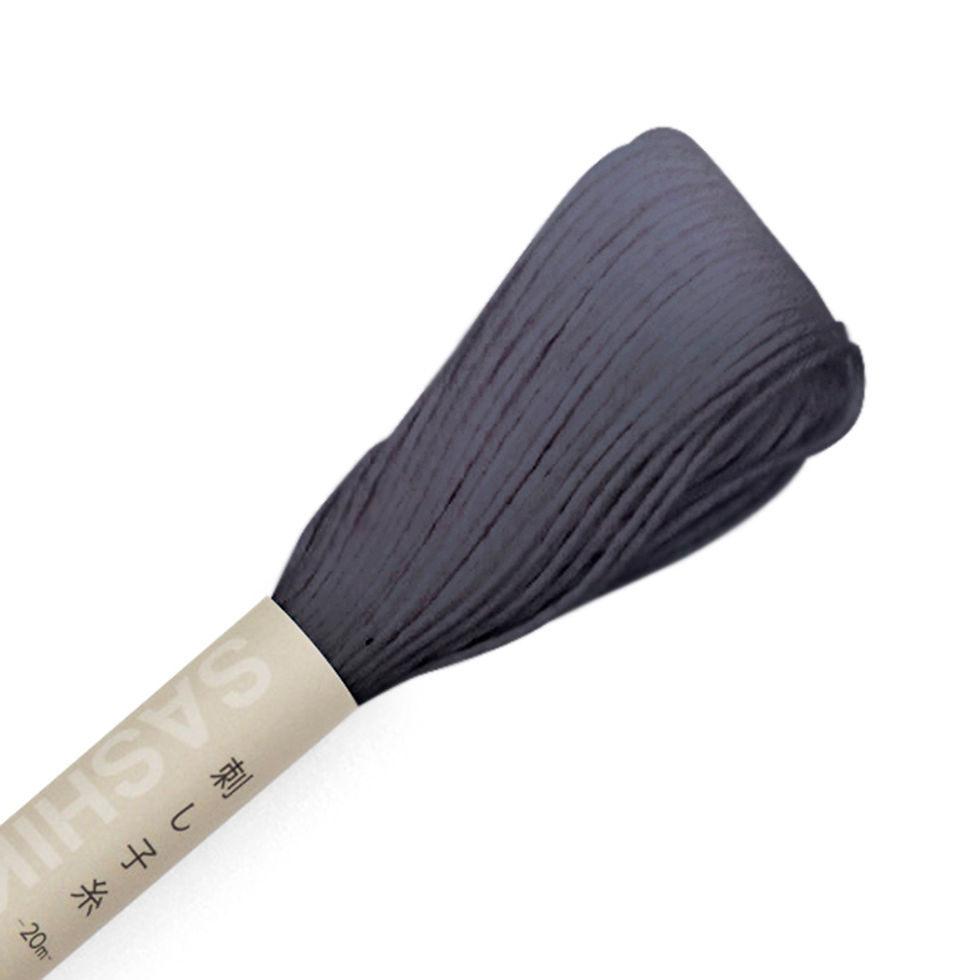This designer sashiko panel is by Hitomi Fujita for QH Textiles, one of many I stock (ideal for combining in a sashiko sampler quilt). Her stunning original designs take hanafukin panels in a new direction, while staying traditional.
This panel is something a bit different though. It has been designed for four identical panels to be sewn together in one of two ways (see photo 1 and 2), to create two different fabulous kaleidoscope designs. Each panel is approx. 30cm square when finished, so four stitched together make a panel 60cm square. You could complete them as individual hanafukin cloths, and display them pushed together as a table centre, or (as I am going to do) cut the printed section out, sew them together and then stitch it as a single panel.
Because you will need four panels to get this effect, this listing is for a set of four panels. A single panel is shown in photo no.3. I have decided not to sell these separately, because it would be so disappointing for a customer to buy one or two, assuming they could get more later, and then find that they are sold out and we can't get them again!
Please see my stitching suggestions below for ways to stitch this design to best advantage.
Hand printed in Japan.
It is a 'hana fukin' with literally means 'flower cloth' and printed on indigo blue coloured narrow width traditional sarashi cloth (an easy to stitch traditional Japanese cotton cloth). Each panel is supplied in one piece with a plain area the same size attached, because they are designed to be stitched through both layers and the edges turned in to make a little cloth, but you can stitch the printed layer separately (as I often do) - single is best if you intend to use this panel in a quilt, adding extra quilting later. They may be stitched with a doubled or single thread (or a mixture of both, for an interesting effect), in white or using coloured threads. Any of my medium sashiko threads would be ideal for these panels, or use the fine 4-ply sashiko threads doubled.
Stitching suggestions for the panel -
The rays coming out from one corner could look good in gold, with the overlapping decorative 'cards' bordered in a similar shade, and the geometric sashiko patterns in the cards stitched in a variety of colours. The chrysanthemums would look good in white or cream and gold, with the cord perhaps in shaded red, or red and white. It would also look great stitched in different thickeness and/or shades or white and cream.
These hand printed designer panels are more expensive than the other hanafukin I sell, but the patterns are so beautiful, I wanted to start selling them! I have more more designs by Hitomi Fujita in stock, including larger panels.
Sashiko Cloth by QH Textiles (Australia)
Printed with water-soluble ink - marks wash out
Composition : 100% Cotton
Individual Cloth Size : Approx. 30cm x 60 cm (Finished size : 30cm x 30cm), so all four panels will finish at 60 x 60cm approx.
About Sarashi cotton -
Sarashi cloth is quite lightweight compared with other sashiko fabrics, but is very easy to stitch, super absorbent and wears well. It is one of the fabrics traditionally used for kimono underwear! The second photo shows a comparison between these panels and those by Olympus Thread Mfg. Co., which are most of the other hanafukin I sell. This QH Sarashi fabric is a slightly finer weave, although the stitch length is about 3mm (the same as my Olympus panels), and is the one in front in the photo. The fabric shown both plain and with 5mm dots is the Olympus fabric. The shade of blue is also very slightly different (it actually looks more extreme in the photo than in real life).
MK01 kaleidoscope SET OF 4 designer hanafukin sashiko sampler
Hanafukin cloths are traditionally stitched through two layers of fabric (the second layer is the plain section) but can be stitched just through one if you want to add wadding and quilt the panel after finishing the sashiko stitching. For 'quilt as you go', the plain section can be used as a backing. Black wadding is recommended, because it doesn't show or beard through the fabric.
To stitch through two layers, the cloth can be stitched all round and bagged out before stitching the sashiko; stitched across the short ends with right sides together, then the sashiko stitched, and finally the two selvedges turned in on each other and ladder stitched together; or the edges tucked in using a butted finished and stitched all round. Any of these can also be done after the sashiko is stitched, if you don't want the back of your stitching to be visible.
In addition to simply stitching the whole panel in medium white sashiko thread, you can experiment with different colours and thread thicknesses. It would look great with the circle outlines stitched in one or more colours. Whatever colours you choose, remember the lightest colours, white especially, will appear bolder against the dark blue fabric, while colours like deep red will recede, rather than create a bright accent in your stitching.The whole panel can be stitched in a single medium sashiko thread or with some threads doubled for a bolder effect, such as the circle outlines. If you wish to stitch in just one colour, try combining the 20m medium sashiko thread with the 80m fine sashiko thread. The colours are identical.

































